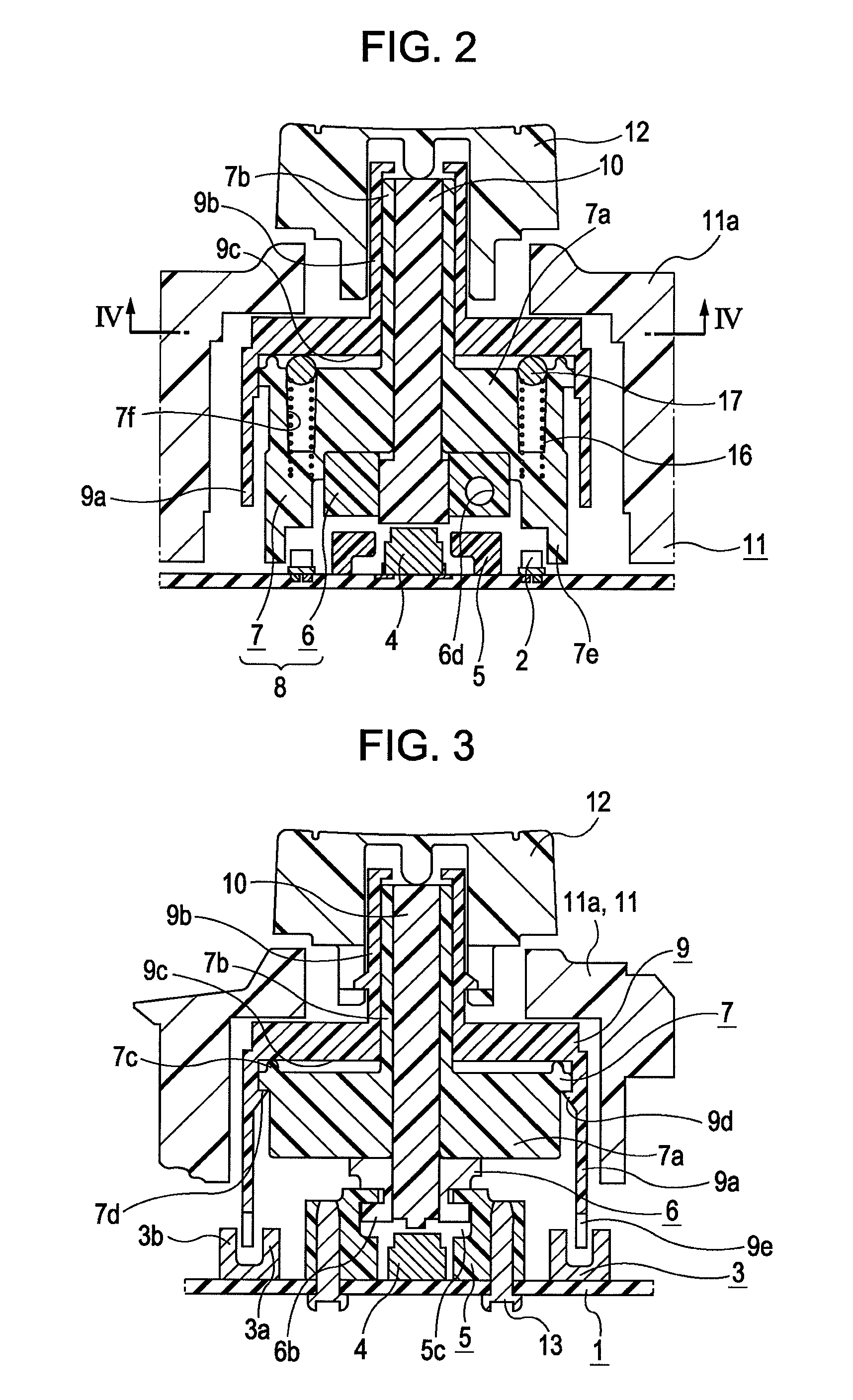Complex-operation input device
a technology of input device and complex operation, which is applied in the direction of coding, pulse technique, instruments, etc., can solve the problems of inability to design, inability to detect the rotation of the dial knob, undetectable changes in the detection state of the rotation sensor, etc., and achieves the reduction of cost, easy to use, and the effect of compactness of the entire devi
- Summary
- Abstract
- Description
- Claims
- Application Information
AI Technical Summary
Benefits of technology
Problems solved by technology
Method used
Image
Examples
Embodiment Construction
[0030]A complex-operation input device according to an embodiment of the present invention will be described below with reference to the drawings. First, the mechanical configuration of the complex-operation input device according to this embodiment will be described with reference to FIGS. 1 to 7. This input device is installed near a driver seat of a vehicle and is used for operating various functions of a vehicle air conditioner. As shown in an exploded perspective view in FIG. 1, the input device mainly includes a substrate (base) 1 on which slide sensors 2, rotation sensors 3, a push switch 4, and the like are disposed, a slider holder 5 fixed on the substrate 1, a holder-slider unit 8 formed by screwing a slider 6 slidably supported by the slider holder 5 onto a rotor holder 7, a rotor 9 rotatably supported by the rotor holder 7, an actuator 10 for pressing and driving the push switch 4, a casing 11 that accommodates these components 1 to 10, and an operable knob 12 spline-fit...
PUM
 Login to View More
Login to View More Abstract
Description
Claims
Application Information
 Login to View More
Login to View More - R&D
- Intellectual Property
- Life Sciences
- Materials
- Tech Scout
- Unparalleled Data Quality
- Higher Quality Content
- 60% Fewer Hallucinations
Browse by: Latest US Patents, China's latest patents, Technical Efficacy Thesaurus, Application Domain, Technology Topic, Popular Technical Reports.
© 2025 PatSnap. All rights reserved.Legal|Privacy policy|Modern Slavery Act Transparency Statement|Sitemap|About US| Contact US: help@patsnap.com



